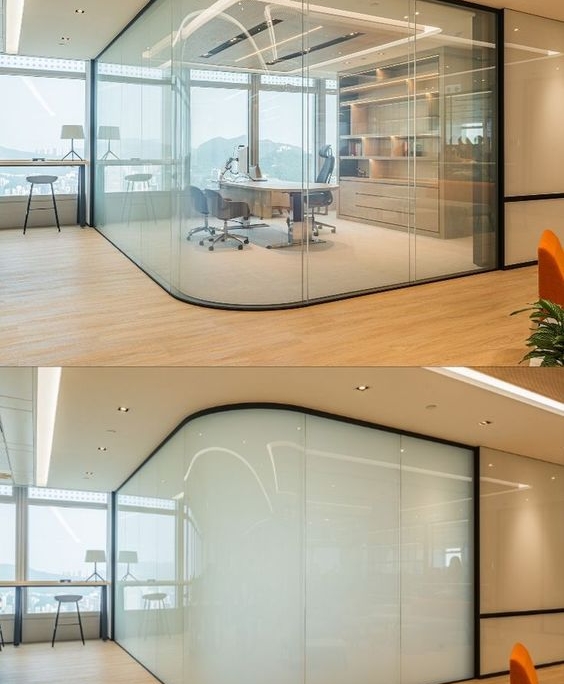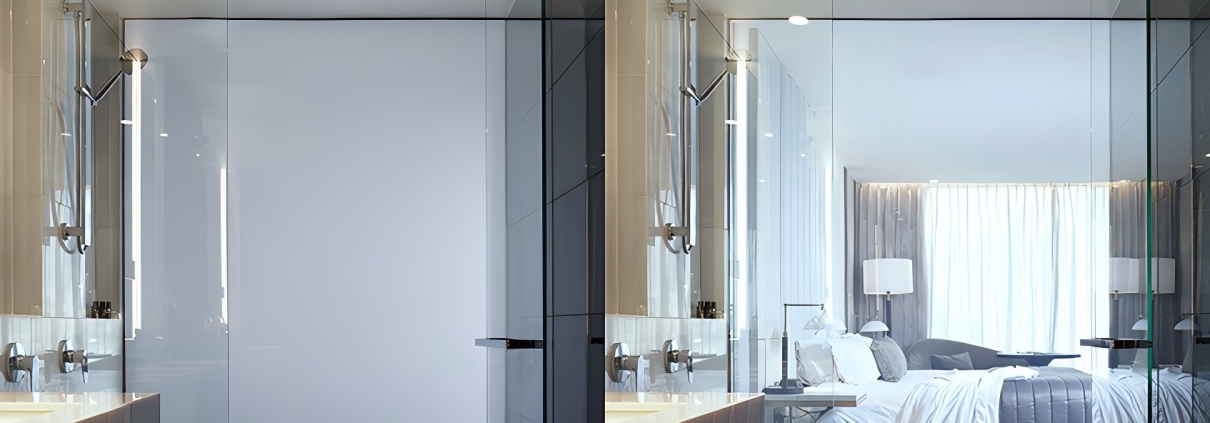From function to aesthetics: the rise and application of smart glass
1. The functional revolution of smart glass
With the continuous advancement of science and technology, smart glass is gradually changing from a concept in science fiction to a practical product in real life. This kind of glass, which can autonomously adjust its own characteristics according to environmental changes, has surpassed the single function of traditional glass and achieved a qualitative leap in functionality.
One of the applications of smart glass is dimming glass, which can control the transparency of glass through electric current, thereby achieving the dual functions of privacy protection and light adjustment. This kind of glass has been widely used in modern office buildings, hotel rooms and even private homes. Users can simply press a button to turn the glass from completely transparent to translucent or opaque, providing great flexibility for space.
Another common smart glass is self-cleaning glass, which has a specially treated surface that can use ultraviolet rays in sunlight to decompose dirt attached to the surface and remove it through rainwater. This not only reduces the frequency of cleaning work, but also extends the service life of glass, especially suitable for high-rise buildings and hard-to-reach windows.
In addition, smart glass also includes types such as heat-insulating glass and anti-glare glass, which can automatically adjust the light transmittance and heat insulation of the glass according to the ambient temperature or light changes, thereby improving the energy efficiency of the building and reducing the energy consumption of air conditioning and lighting.
2. The perfect combination of aesthetics and function
In addition to the breakthrough in functionality, smart glass is also amazing in aesthetic design. Its appearance provides architects and interior designers with a new creative tool, giving the space more dynamic expression and visual effects.
Dimming glass is not only a tool for protecting privacy, it can also be used as a decorative element to create a futuristic space. When the glass changes from transparent to opaque, the change of light adds a different atmosphere to the interior. This design technique has been used in some high-end restaurants, hotel lobbies and exhibition spaces. Dimming glass can also be combined with projection technology to transform into a projection screen, making the space function more diverse.
In addition, colored smart glass brings more possibilities to architecture and decoration. Designers can create unique visual effects by adjusting light and color, so that the appearance of the building changes over time. This kind of glass has begun to be used in some iconic buildings, adding a unique artistic atmosphere to the urban landscape.

3. Future prospects of smart glass
The rise of smart glass is not only a combination of function and aesthetics, but also a perfect embodiment of modern technology and design art. With the popularization of the concepts of smart home and smart building, the application prospects of smart glass will be broader. In the future, with the further development of technology, the cost of smart glass is expected to decrease, and the scope of application will gradually expand from the high-end market to the mass market.
In general, smart glass is changing our traditional perception of architecture and space design. It not only brings convenience and comfort to our lives, but also brings new possibilities to architectural design. With the continuous advancement of technology, smart glass will continue to lead the trend of function and aesthetics and become an indispensable part of modern architecture and interior design.



